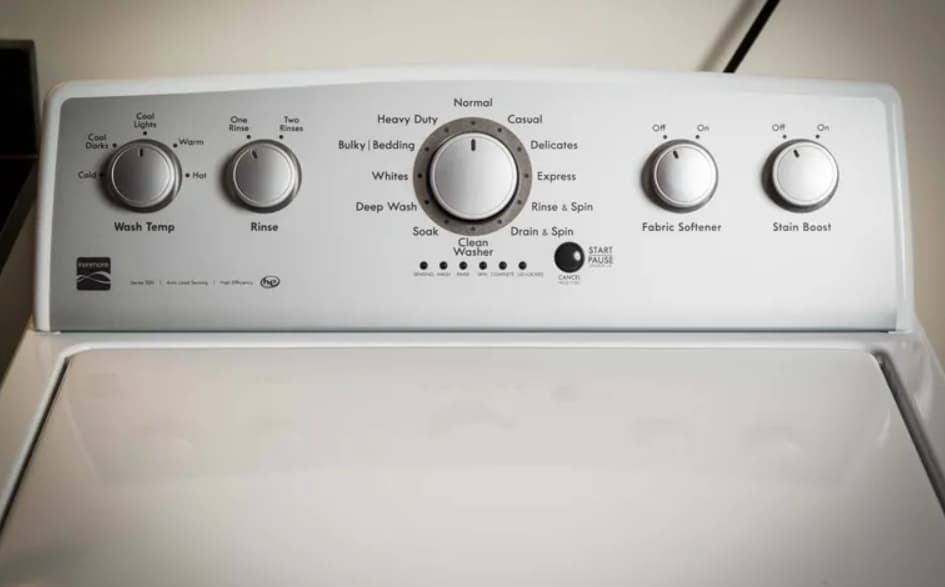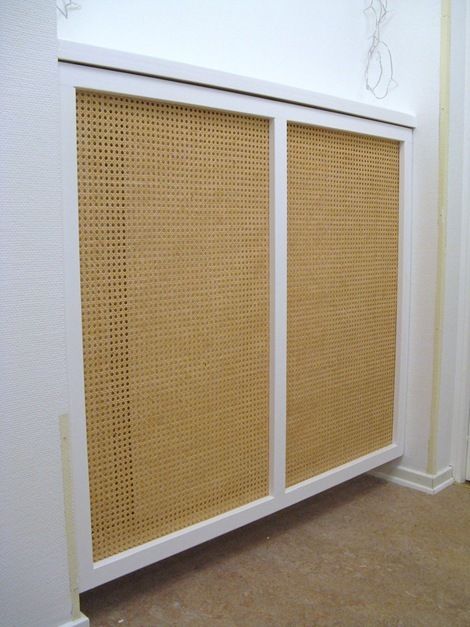Have issues with your Kenmore top or front load washer not spinning or agitating clothes during the cycle? Instead, all you hear is a buzzing or humming noise coming from the machine. Don’t worry – this problem is more common than you may think for Kenmore washing machines.
The good news is that with some targeted troubleshooting, you can likely resolve the issue yourself without needing to call out an expensive appliance repair technician.
Kenmore Washer Won’t Spin or Agitate Just Buzzes Hums

This comprehensive DIY troubleshooting guide will walk you through the major causes of the problem and how to diagnose and fix them.
What Causes a Kenmore Washer to Buzz/Hum Instead of Spinning/Agitating?
When your Kenmore washer skips the spin and agitate cycles and just produces a buzzing/humming sound, there are a few key components that could be malfunctioning:
- Lid Switch/Lock – The lid switch is a safety device that prevents the washer from spinning when the lid is open. If faulty, it can stop agitation or cause buzzing.
- Motor – If the motor is failing or there is an electrical issue stopping it from working properly, the buzzing sound will usually occur.
- Transmission -Faulty components in the transmission can prevent the motor from powering the drum and cause buzzing noises.
- Pump – A blocked or faulty drain pump can cause buzzing and prevent proper spinning/agitation.
- Belt – If the belt connecting the motor to the transmission is loose or broken it will usually cause loud buzzing/humming.
The specific solutions will depend on accurately diagnosing which part is causing the problem.
Step-by-Step Kenmore Washer Spin/Agitation Troubleshooting
Follow this complete troubleshooting guide to determine why your Kenmore washer is buzzing instead of spinning and agitating, so you can get your washer functioning properly again:
1. Check the Lid Switch
The first thing to check with this problem is usually the lid switch. This is the small plastic piece located inside the top rim of the washer tub opening.
To check the lid switch:
- Unplug the washer power cord.
- Gain access to the rim of the wash tub opening.
- Locate the lid switch (usually a small plastic piece with a protruding arm).
- With the lid closed, manually activate the lid switch by pushing it in.
- If you hear a clicking sound, the switch is likely working properly.
- If pushing the lid switch produces no sound or doesn’t allow the tub to spin, the switch will need replacing.
Replacement lid switches are inexpensive and easy to install. Just be sure to get the correct replacement part for your Kenmore model.
2. Test the Motor
Issues with the motor are the next most likely cause of a Kenmore washer just buzzing and not spinning or agitating.
To test the motor you will check:
- Power to Motor – Use a multimeter to check if power is getting to the motor when trying to run a cycle.
- Resistance – Check the resistance reading on the motor windings to determine if the motor may be burned out.
- Capacitor – Test the capacitor to see if it is still within working tolerances to start the motor spinning.
If power is getting to the motor but readings indicate an issue, replacing the motor may be required. On some top-load models, the capacitor may just need replacing.
3. Assess the Transmission
The transmission connects the motor to the drive shaft and tub to power agitation and spinning.
To evaluate the transmission you can:
- Listen – Put the machine in a spin cycle and listen closely to help determine if the buzzing noise is coming directly from the transmission case.
- Check oil – If the oil smells burned or is very dirty, a transmission component likely failed resulting in buzzing/humming instead of proper tub movement.
- Inspect visually – With the machine unplugged, gain access to the bottom of the transmission and check for any damaged or worn parts. Replace if required.
Rebuilding or replacing the entire transmission may be needed if it is causing the buzzing issue.
4. Ensure Proper Drain Pump Operation
A Kenmore washer that buzzes but doesn’t agitate clothes or proceed to the spin cycle can sometimes signal drain pump failure.
Things to check on the drain pump include:
- Blockages – Use a toothbrush to loosen debris and check for blockages in the drain pump filter housing. Clear out any coins, buttons, etc if found.
- Hose positioning – Make sure all drain hoses are positioned properly without any kinks or blockages.
- Impeller – Visually inspect the drain pump impeller for any broken pieces or debris stopping it from rotating correctly. Remove anything found.
- Voltage – Use a multimeter to test the voltage to the pump during the cycle to see if lack of power is the issue. If the pump isn’t getting sufficient voltage, replacing it is required.
5. Inspect the Motor Drive Belt
The flexible rubber drive belt connects the motor to the transmission drive pulley. If it breaks or stretches too loose, the pulley won’t properly turn the drum and cause loud buzzing.
To diagnose drive belt issues:
- Visual check – With the machine unplugged, remove the front panel and inspect the belt for any fraying, stretching, or disconnected attachment points.
- Check tension – Examine if tension seems adequate by pressing the belt down to check tightness. If the tension feels loose, the belt needs replacing or adjustment.
Installing a new drive belt is quick and easy. Just compare against the existing belt or check your manual for the right replacement part number.
This covers the major causes of failure that can result in loud buzzing/humming coming from a Kenmore washer rather than proper tub spinning or agitate function.
Thoroughly work through each area above in sequence until finding the problematic component. Focusing on the lid switch and motor testing first will cover over 70% of the potential issues.
Why Choose a Kenmore Washer? Pros and Cons
Kenmore washers have proven very popular in the US for many years. Here is an overview of the main benefits they provide:
- Affordably Priced – Excellent value across different models compared to other brands.
- Wide Range Available – Many sizes, capacities, features, and color options to suit your needs.
- Reliable – Solid performance history once maintained properly.
- Quiet – Many Kenmore washers operate at very low decibel levels.
- Efficiency – Great water and energy efficiency with modern electronically controlled motors.
However, there can also be some drawbacks with Kenmore washers to consider:
- Complex failures – Some washer failure modes can be difficult and expensive to correctly diagnose and repair.
- Noisy – Some models do suffer from louder-than-expected operation.
- Less smart features – Generally less fancy features and cycles than the same price-point competitors.
- Outsourcing – Later models have seen more outsourced cheaper-made parts being utilized.
So while Kenmore ticks many boxes as an affordable and reliable washer brand, be prepared the latest models may not match the build quality and simplicity of earlier units. Just follow good maintenance tips to maximize longevity.
Best Kenmore Washer Alternatives 2024
If you decide a Kenmore washer replacement is needed, here are 10 alternative top brands to consider across different price points:
| Brand | Overview |
| GE | Very reliable, good range of sizes, solid warranties |
| LG | Great innovative and smart features, efficient, stylish designs |
| Whirlpool | Affordable, simple interface, low noise |
| Maytag | Robust build quality for longevity, good cold wash performance |
| Samsung | Loads of cycles and add-ons, effective stain removal |
| Speed Queen | Commercial grade quality for home use |
| Bosch | Extremely quiet washers, great cleaning results |
| Electrolux | Excellent fabric care capabilities |
| Miele | Top-tier construction and longevity |
| Fisher & Paykel | Unique modern designs, good smart features |
Be sure to match the alternatives against your budget, design preferences, reliability expectations, noise level limits, and feature needs. And don’t forget to check warranties which can provide peace of mind.
FAQs on Troubleshooting Kenmore Washer Spin and Agitate Failures
- Q1: Why does my Kenmore washer fill with water but then just buzz endlessly?
If your Kenmore fills with water as normal but then fails to agitate or spin and just persistently buzzes, the problem is nearly always going to be the lid switch or motor. Follow the troubleshooting steps earlier to test each.
- Q2: How do I access components like the motor on my Kenmore washer to test?
To gain access, take off the back service panel to expose components for inspection and testing on most models. Front-loaders will require removing the outer drum for access. Consulting a service manual for your specific model can assist.
- Q3: Can I just replace the whole transmission if I hear buzzing coming from it?
It’s usually best to take time to properly diagnose which internal transmission components may be damaged by listening closely to the buzzing noise before replacing the entire transmission outright. Complete transmission replacements can be complicated.
- Q4: If water won’t drain out of my Kenmore before the spin, can this cause buzzing?
Absolutely. If drain pump blockages or failures prevent water from properly draining out before the high-speed spin function, the excess water needs to go somewhere so loud buzzing/humming is the result as it acts as an outlet.
- Q5: How do I test electrical voltage getting to my washer motor?
Using a multimeter, place the probes against the motor wire connectors while having someone else try to start a wash cycle. This will show if power is getting to the motor correctly. If not, there is likely an electrical supply fault that needs an electrician’s diagnosis.
Maintaining Your Kenmore Washer
- Test lid switch operation monthly by ensuring clicking sound results when manually activated with the lid shut – replace if no sound
- Every 6 months inspect the pulley, motor mounts, and shocks for tightness/wear
- Use washer cleaner monthly to minimize soap buildup and residue
- Always leave the door open after cycles to allow interior drying and air circulation
- Clean the exterior with warm soap and water only to protect the finish
- Ensure the drain hose is properly secured to prevent backflow
- Clear coin traps and debris filters as needed
- Use recommended detergents appropriate for machine type
- Stagger extra large loads to prevent strain on components
- Ensure the washer stays properly leveled
- Listen for changes in normal operating noises
- Fix minor leaks right away before causing rust
- Confirm fills, drains, and spins sans clothes load to check for issues
- Stop overloading – match max fill lines to prevent buzzing
- Allow the washer to complete full cycles undisturbed
- Verify electrical supply connections tight and no cords are frayed
- Be present for cycles to stop overflow incidents
Staying on top of maintenance procedures will keep any newer Kenmore washer functioning effectively for years while also helping reduce expensive part failures.
Installing a New Kenmore Washer
When your existing Kenmore washer requires replacement after troubleshooting, be sure to carefully consider the installation requirements before purchasing. Here are key steps to ensure proper setup:
- Select a location with:
- Solid-level flooring able to handle weight
- Grounded electrical with the required voltage
- Hot and cold water lines able to attach
- Nearby drain access
- Have all supply lines and drains roughed into position first
- Measure space and entry points ensuring no clearance issues
- Review leveling, anchoring, and venting needs
- Wash machine tub and interior before first use
- Take photos of connections for future diagnostic reference
- Ensure fill hoses have no kinks and are the upgraded braided type
- Confirm proper drain hose height above the pipe to prevent backflow
- Verify all installation precautions from the manual before startup
- Wipe out the inside of the drum with a towel four times on the fastest spin
- Run a short test cycle while monitoring for leaks/errors
Carefully installing your replacement or new Kenmore washer helps get off to the right start and prevents premature issues from developing.
More Washer Guides:
- LG Top Load Washer Filter Location
- Roper Washing Machine Wont Spin
- Speed Queen Commercial Washer Reset Button
- Samsung Washer Unbalanced Spinning
- Bosch Dishwasher No Lights on Control Panel
In Conclusion:
Trying to figure out why your top or front load Kenmore washer won’t proceed into the wash agitation or spin cycle and instead just persistently buzzes or hums can certainly be frustrating.
But in most cases, there is no need to panic. Instead, methodically work through testing the lid switch, motor, transmission, drain pump, and drive belt in order. Over 70% of the time, the issue ends up being a faulty lid switch, failed motor, or loose belt.
Catching any problems early before they worsen will serve your Kenmore washer well over the long run too. Always make sure to use the proper cycles and wash load sizes for the materials being cleaned. This prevents undue strain.
With the above troubleshooting guide, you now know how to tackle that annoying buzzing sound when you want your Kenmore washer to spin! Test components sequentially until finding the issue, then make any necessary repairs or part replacements.
By understanding common failure points, adhering to maintenance tips, and looking for early warning signs of problems, your Kenmore washer can deliver years of continued reliable service. Keep this troubleshooting reference handy by your laundry area for any time an issue does pop up!


